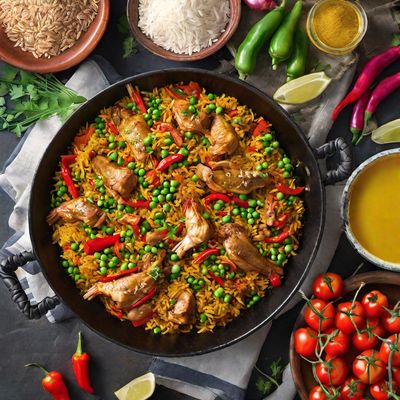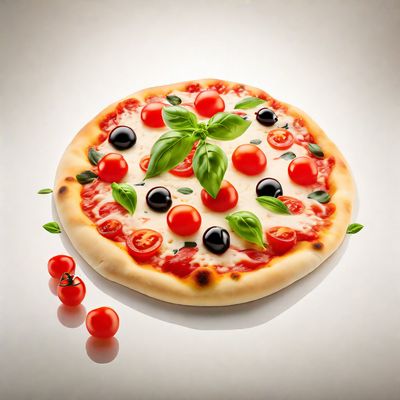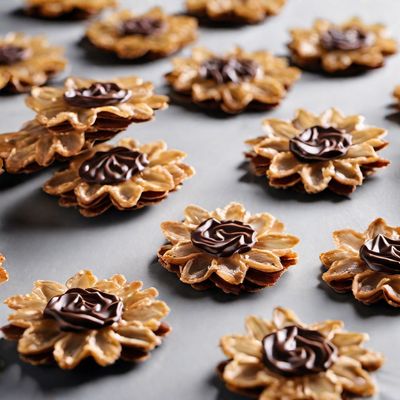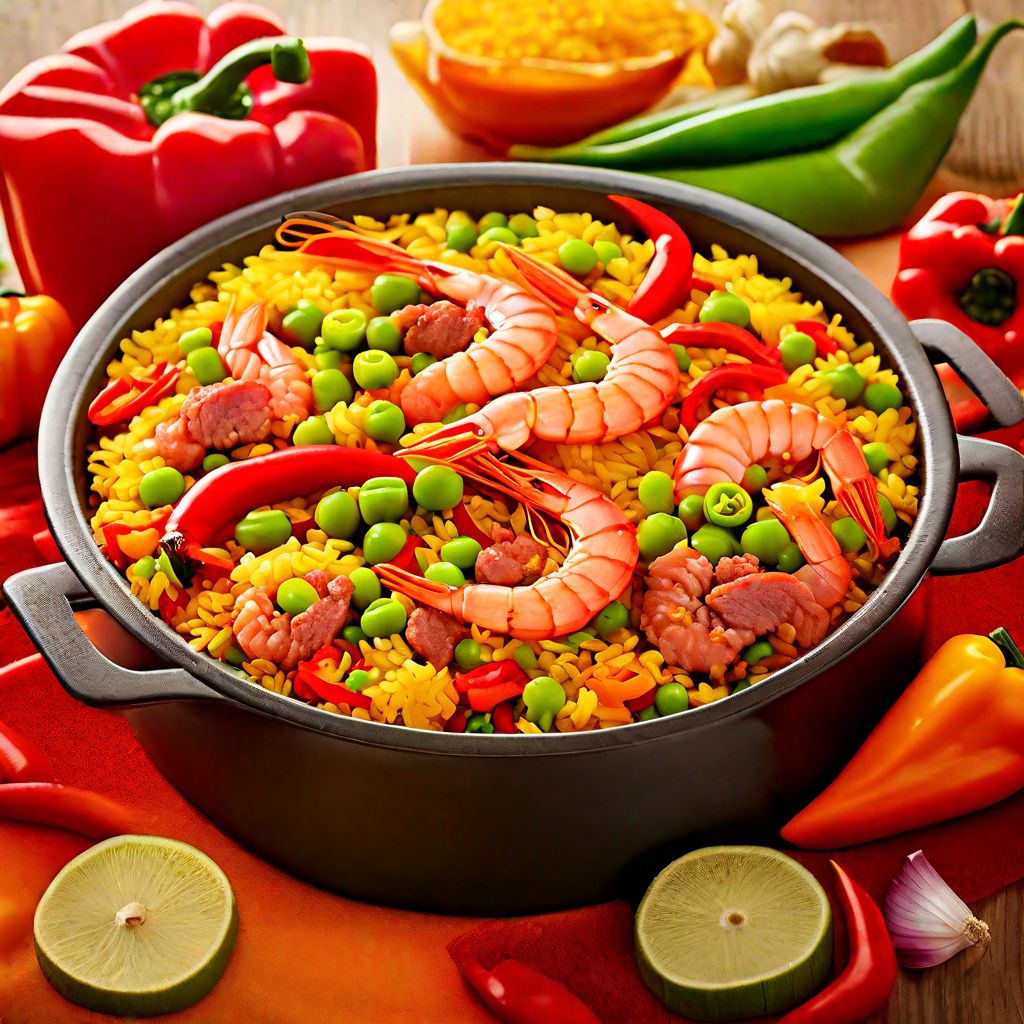
Recipe
Molecular Gastronomy Paella
The Futuristic Twist: Molecular Gastronomy Paella
4.9 out of 5
In the realm of molecular gastronomy, traditional dishes are transformed into innovative culinary experiences. This Molecular Gastronomy Paella takes inspiration from the iconic Spanish dish and elevates it to new heights. By utilizing cutting-edge techniques and ingredients, we create a visually stunning and flavor-packed rendition that will amaze your taste buds.
Metadata
Preparation time
30 minutes
Cooking time
20 minutes
Total time
50 minutes
Yields
4 servings
Preparation difficulty
Medium
Suitable for
Pescatarian, Gluten-free, Dairy-free, Nut-free, Low-fat
Allergens
Shellfish (prawns)
Not suitable for
Vegan, Vegetarian, Paleo, Keto, High-protein
Ingredients
While the essence of the traditional Spanish paella remains, this molecular gastronomy adaptation introduces unique textures, unexpected flavor combinations, and visually captivating presentations. The focus shifts from the rustic charm of a one-pot dish to a meticulously crafted plate that showcases the artistry of molecular gastronomy. We alse have the original recipe for Paella, so you can check it out.
-
200g (7 oz) Arborio rice 200g (7 oz) Arborio rice
-
500ml (2 cups) vegetable stock 500ml (2 cups) vegetable stock
-
50g (1.8 oz) chorizo, finely diced 50g (1.8 oz) chorizo, finely diced
-
100g (3.5 oz) chicken breast, thinly sliced 100g (3.5 oz) chicken breast, thinly sliced
-
100g (3.5 oz) prawns, peeled and deveined 100g (3.5 oz) prawns, peeled and deveined
-
50g (1.8 oz) green peas 50g (1.8 oz) green peas
-
1 red bell pepper, finely diced 1 red bell pepper, finely diced
-
1 onion, finely diced 1 onion, finely diced
-
2 cloves of garlic, minced 2 cloves of garlic, minced
-
2 tablespoons olive oil 2 tablespoons olive oil
-
1 teaspoon smoked paprika 1 teaspoon smoked paprika
-
1/2 teaspoon saffron threads 1/2 teaspoon saffron threads
-
Salt and pepper to taste Salt and pepper to taste
Nutrition
- Calories (kcal / KJ): 380 kcal / 1590 KJ
- Fat (total, saturated): 10g, 2g
- Carbohydrates (total, sugars): 50g, 3g
- Protein: 20g
- Fiber: 4g
- Salt: 1.5g
Preparation
-
1.In a small bowl, combine the saffron threads with 2 tablespoons of hot water and set aside.
-
2.Heat the olive oil in a large pan over medium heat. Add the diced chorizo and cook until crispy. Remove the chorizo from the pan and set aside.
-
3.In the same pan, add the chicken breast slices and cook until browned. Remove the chicken from the pan and set aside.
-
4.Add the diced onion, minced garlic, and red bell pepper to the pan. Sauté until the vegetables are softened.
-
5.Add the Arborio rice to the pan and stir to coat it with the oil and vegetables.
-
6.Pour in the vegetable stock and saffron mixture. Season with smoked paprika, salt, and pepper. Stir well.
-
7.Reduce the heat to low and cover the pan. Allow the rice to cook for about 15 minutes or until it absorbs the liquid and becomes tender.
-
8.Meanwhile, prepare the prawns by seasoning them with salt and pepper. Heat a separate pan over high heat and sear the prawns until they turn pink and are cooked through.
-
9.Once the rice is cooked, gently fold in the cooked chorizo, chicken, prawns, and green peas.
-
10.Serve the Molecular Gastronomy Paella on individual plates, garnished with microgreens and edible flowers for an artistic touch.
Treat your ingredients with care...
- Arborio rice — Use Arborio rice for its high starch content, which contributes to the creamy texture of the dish.
- Saffron threads — Infuse the saffron threads in hot water before adding them to the paella for maximum flavor extraction.
- Chorizo — Opt for a high-quality chorizo with a good balance of smokiness and spiciness.
- Prawns — Ensure the prawns are fresh and properly deveined for the best taste and texture.
- Microgreens and edible flowers — Use fresh and vibrant microgreens and edible flowers to enhance the visual appeal of the dish.
Tips & Tricks
- Experiment with different types of seafood, such as scallops or mussels, to add variety to your Molecular Gastronomy Paella.
- For an extra burst of flavor, try incorporating a few drops of citrus-infused oil into the dish.
- Use a molecular gastronomy technique like spherification to create small bursts of flavored liquid that can be added as garnish.
- Play with different colors by using natural food dyes to tint the rice or other elements of the dish.
- Serve the paella on a large, transparent plate to showcase the intricate layers and textures.
Serving advice
Serve the Molecular Gastronomy Paella as the centerpiece of a sophisticated dinner party. Encourage guests to savor each bite, appreciating the intricate flavors and textures. Accompany the dish with a crisp white wine to complement the seafood and enhance the overall dining experience.
Presentation advice
Create an artistic presentation by arranging the components of the paella in a visually appealing manner. Use tweezers to delicately place microgreens and edible flowers on top of the dish. Consider incorporating elements of height and asymmetry to add intrigue to the plate.
More recipes...
More Spanish cuisine dishes » Browse all
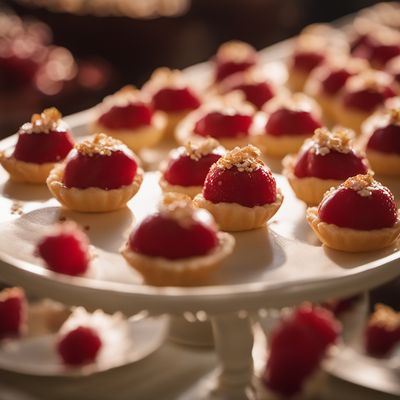
Paparajotes
Paparajotes is a traditional Spanish dessert that is popular in the region of Murcia. It is a simple and delicious dessert that is perfect for any...
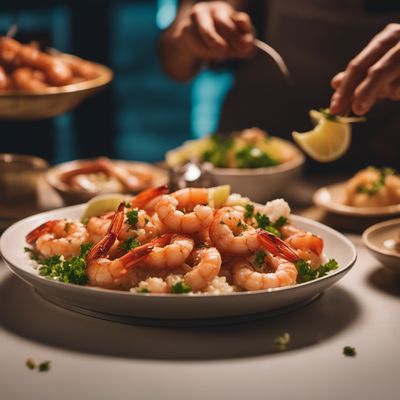
Gambas al ajillo
Garlic Shrimp
Gambas al ajillo is a Spanish dish that consists of shrimp cooked in garlic and olive oil. It is typically served as an appetizer or main course.

Ajoarriero
Codfish Stew
Ajoarriero is a traditional Spanish dish that originated in the Basque Country. It is a hearty and flavorful stew made with salt cod, potatoes,...


